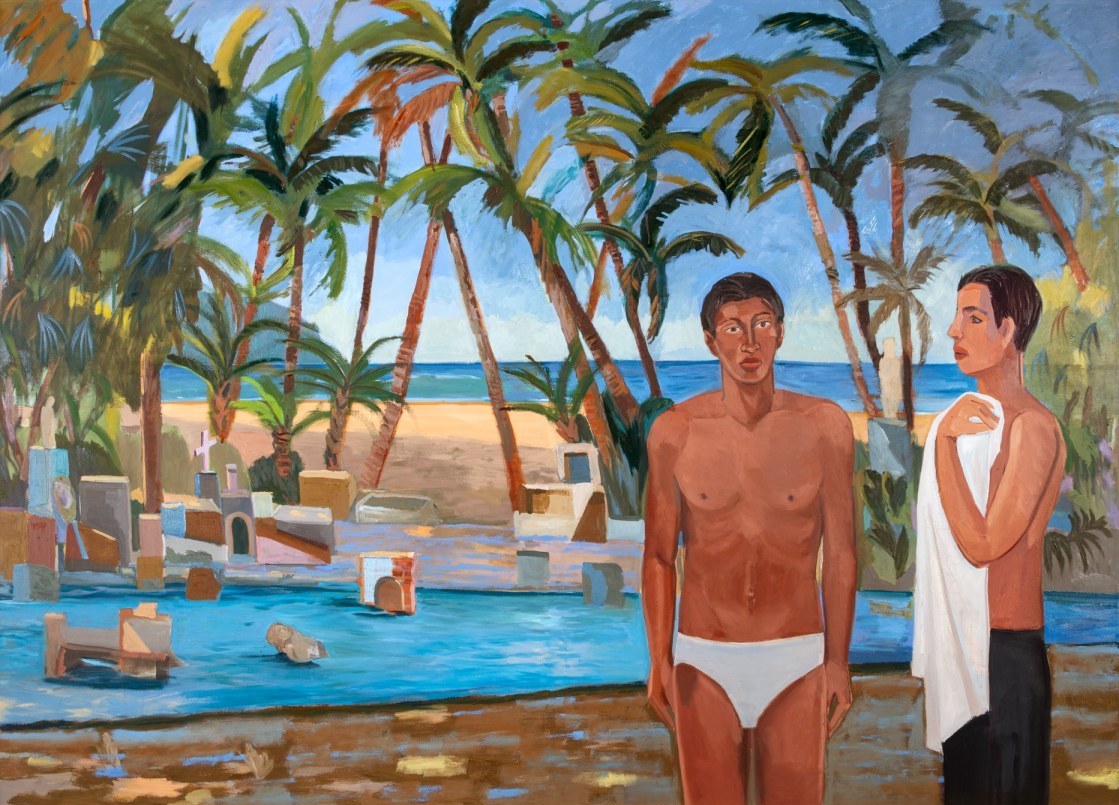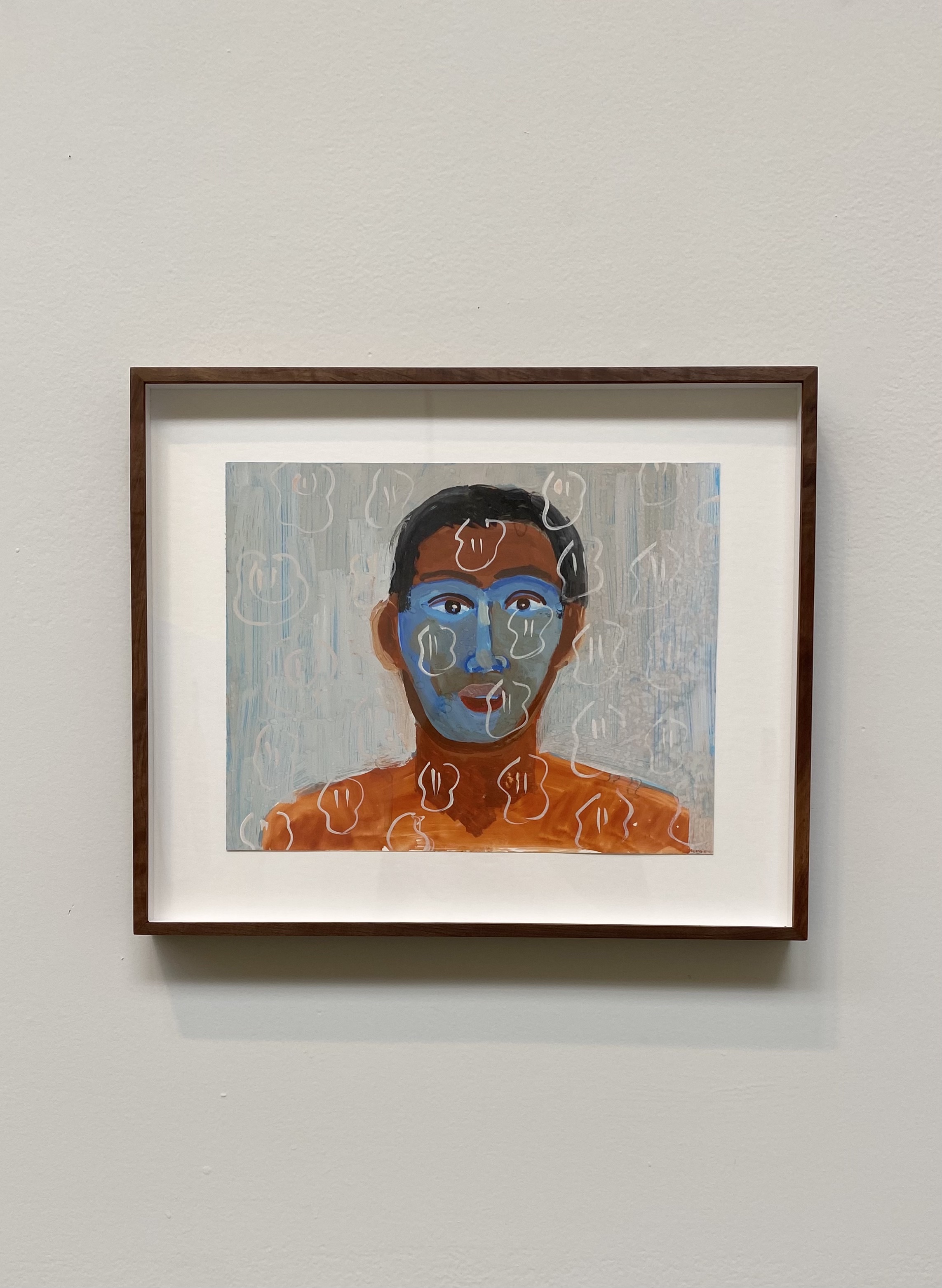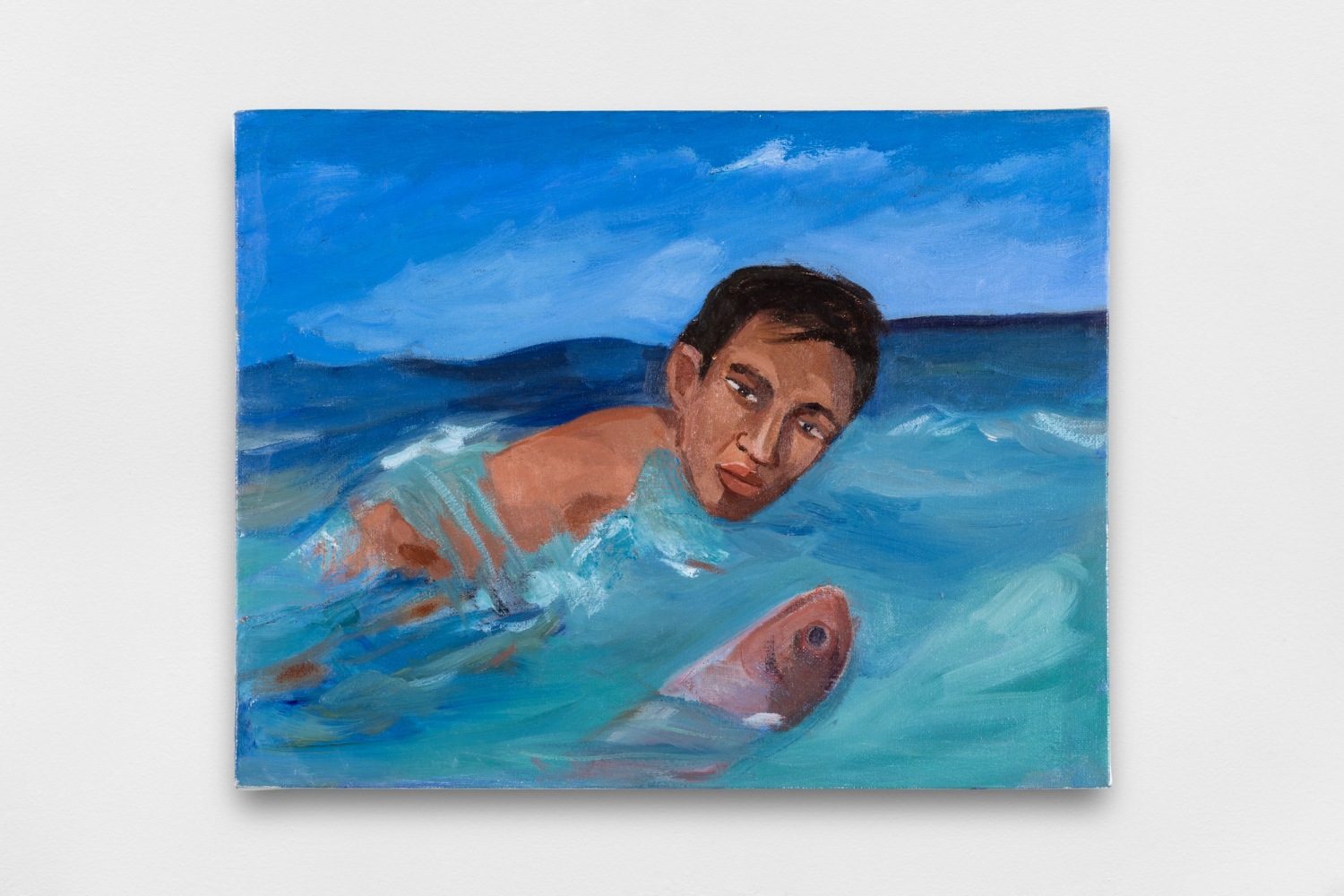
Review
I have never lived on the beach: On 'Temporada de Lluvias' by Roberto Gil de Montes
by Bruno Enciso
At kurimanzutto
Reading time
5 min
Kurimanzutto presents Temporada de Lluvias (Rainy Season), Roberto Gil de Montes’s first solo exhibition in Mexico. The gallery text tells us that the artist has lived in Los Angeles and Mexico City at different times in his life, before finally settling in La Peñita, a small town by the sea in the state of Nayarit. I wonder if his work favors an autobiographical approach. Let’s find out.
Two yellow walls placed in parallel at each end of the room introduce a color pattern that immediately affects the perception of the general atmosphere, beginning by affirming it: here’s an opportunity to get to know a particular landscape. A panoramic look at the work suffices to deduce that this is a coastal environment. The walls’ yellow is pigmented at the same time that it is heated up. Humidity comes from the pictures. From that first glance, in addition, a libidinal trace remains. I think of postcards and photos promoting tourism. Of how its seductive visuality always places before us what is undoubtedly beautiful, making it available to us. In these paintings, the operation is different. By still not interacting with specific presences, a climate of intimacy is sensed, an environment that we cannot fully access. Its exteriority works more as an insinuation than as an explicit offer. It gives away an acute and discreet observer.

According to the most conventional urban imagination, the beach and its charms seem to condense into the promise of vacations. Si hay sol hay playa, si hay playa hay alcohol (“If there’s sun there’s a beach, if there’s a beach there’s alcohol”), we chant. The density of this exhibition emerges when we realize that the youthful exaltation of free time does not stand out here. Rest is definitely here—but in what way? The graves and pitahayas remain still, as is only natural, but so are the bodies and the waters. Neither the wind nor the weather rests, but its progress isn’t clear either. This curious inertia towards the suspension of movement does not seem to be focused on freezing the instant. It’s as though, on the contrary, only by slowing down could a certain expressivity be activated. A dynamic force is contained in order to unfold another that is much more personal. The presence of the symbols as a synthesis of meaning loses importance, and, in counterflow, the relationship that they establish with the inhabitants of beaches is gaining on it. The graveyard is not only a reminder of death but the place where two boys meet to talk. And we can’t hear their conversation.

I’ve never lived on the beach, but I assume that the rainy season has considerably different implications than those affecting cities. In a sense, I’m stating the obvious: that the image of the beach doesn’t always bring with it “spring break” and that the image of rain doesn’t always mean a gray afternoon. Precisely that obviousness makes possible the subtlety of the scenes portrayed in the exhibition. A game of spectatorship that goes in two opposite directions. Yes, the figures, the faces, and the bodies are present and we can grasp them in their presumed fidelity; however, none of this is very familiar to us. We didn’t manage to participate in a touristic voracity, that’s something to celebrate! At our disposal we only have a voyeuristic curiosity that can easily turn into anguish.
What are the invisible regrets that prevent calm from settling here? How does the touch of water affect what I feel, this ecosystem under my skin? The rain affords a new complexity to these questions because it does not always fall with the same force. Sometimes it’s tepid and sometimes it’s freezing. It delays contact with the responses; it’s a very light and enveloping barrier. It prevents us from rushing to direct the gestures of those who inhabit these landscapes within a narrative flow, or within identity politics. If anything, it’s made more captivating.

Taking advantage of the suspension of movement in order to display alternative forces, approaching the figures and their meaning in an affected manner, insisting on the emotional density of a specific frame… I did not manage to locate an autobiographical story, though I did find an endearing series of queer technologies that enrich a figurative pictorial project and twist its possible connection with a realistic discourse. Upon leaving, I wonder what kinds of tricks or artifices I have learned from those who have participated in dissidence before me, as well as from those who inhabit landscapes whose atmospheric configuration is not what I’m used to. I want to believe that, as I grow up, the exercise of the supposedly free sexual desire will not be the only thing that I keep in my favor.
I also recommend reading A Canvas, a poem by Julio Trujillo that accompanies the exhibition. It’s available in both English and Spanish on the gallery’s website. Temporada de Lluvias can be visited until December 15.
* Without losing sight of the participation of some painters within the program Siembra, and regretting not being able to deal with it in this text, it’s worth noting that this is the first time in years that this gallery is presenting an exhibition exclusively of painting, presented on the wall, occupying the entire space. Perhaps this observation can indicate something in conversations about the local artistic offering.
Translated to English by Byron Davies
Published on November 19 2022